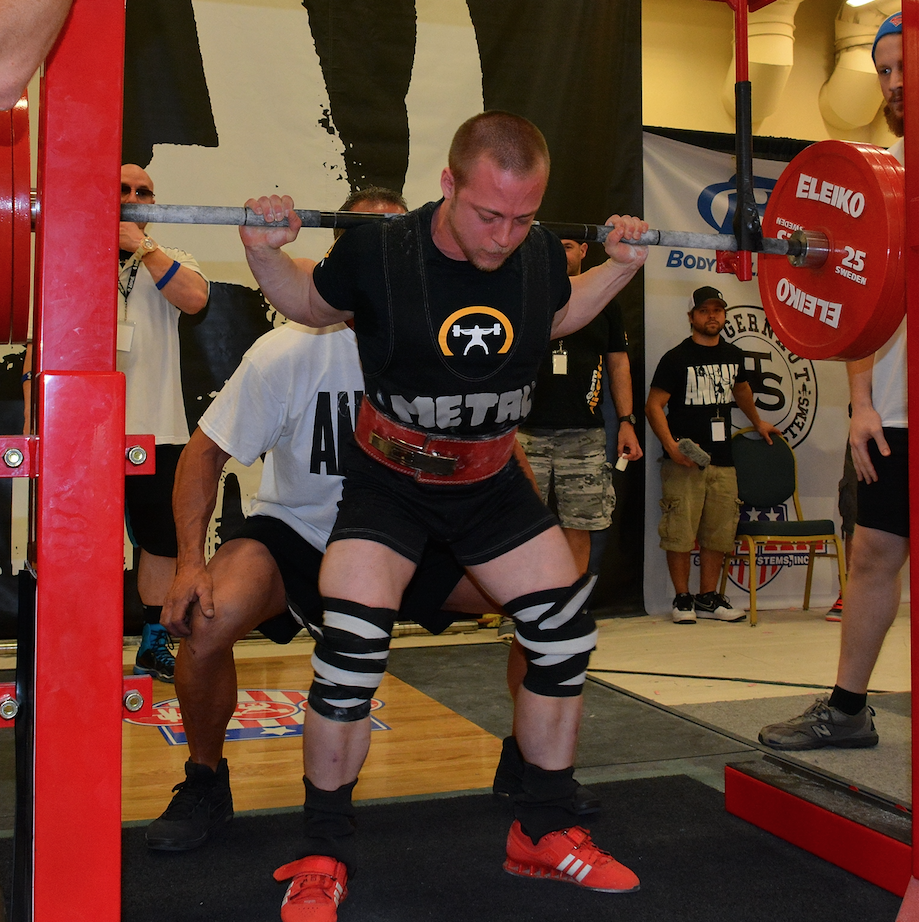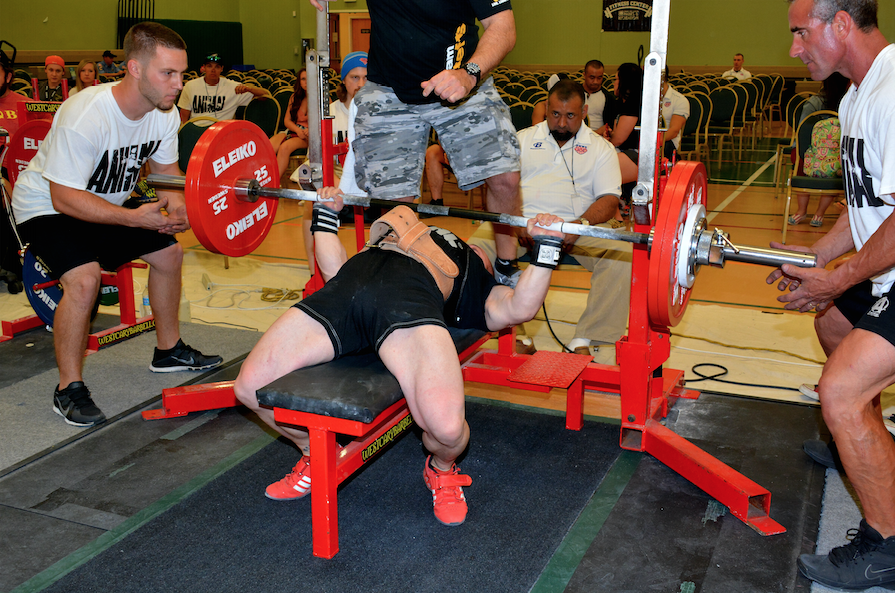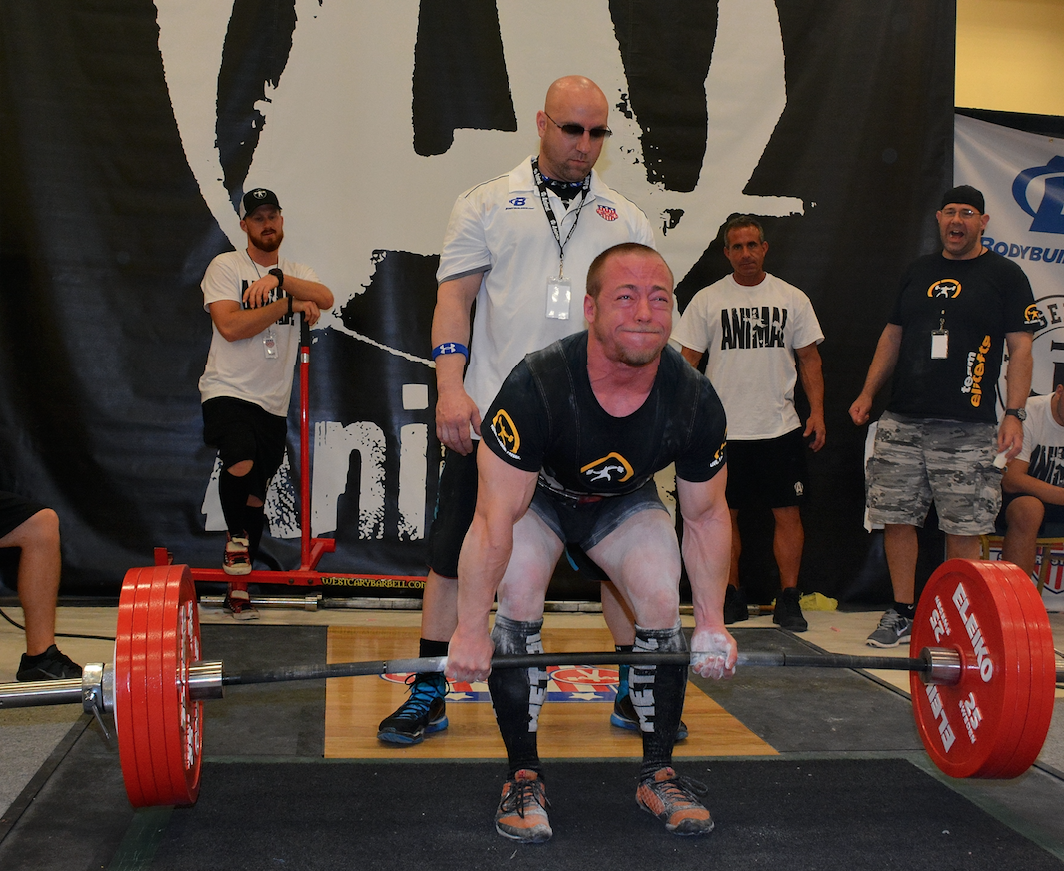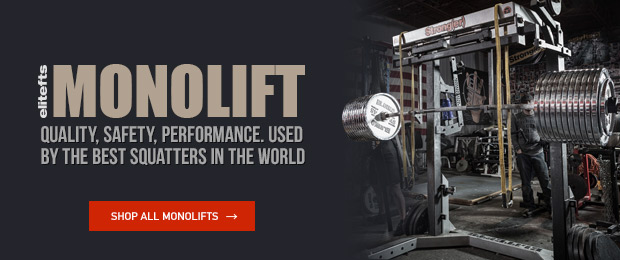
A couple months ago several of my lifters competed at the RPS Lexen Fall Classic. While they had a relatively good showing, there was still plenty we could improve on from a meet preparation standpoint. This article will address a few of the finer points of insuring you have the best meet possible.
Powerlifting is about putting together the best numbers you can on the platform on competition day. PRs are nice, winning is nice, and records are nice, too — but they don't happen without first putting up your best numbers on that day. On competition day, you are lifting on different equipment, at a different time, in a different time zone, with a different warm-up, with different food, in a different environment, with the added pressure of people watching, judges, and competition amongst many other variables that are different from the comfort of your regular training. When preparing for competition, you want to be able to manage and prepare for as many of these variables as possible.
1. Water Cuts, Rebounds, and Food Choice
At some point in your powerlifting career, you will probably cut weight to be more competitive in a lighter weight class. This can be done through dieting, water/sodium loading and cutting, excessive sweating through saunas, hot tubs, or cardio, and the use of diuretics. I am not going to lay out a plan for this, but I will tell you that you need to keep it simple, work with someone who knows what they are doing, and use experience over time to determine what methods work best for you. Do not try to cut a crazy amount of weight your first time.
MORE: The Science Behind the Weight Cut
If you do cut weight, you need to replenish your glycogen stores and rehydrate to get your body weight back to where you've been training. If you don’t cut weight, you need to ensure you are well hydrated and have plenty of fuel to carry you through a tough day of lifting. Where I think a lot of people go wrong is in their methods of doing so. One method lifters use to rehydrate is slamming a gatorade, pedialyte, or some other high sugar, high electrolyte drink immediately post weigh-ins. Unfortunately, because of the osmolarity of these drinks and the speed in which people drink them, they have a tendency to sit in the stomach a bit too long, making the rehydration process take longer and delaying the ability to intake (and more importantly digest) solid food. A better approach would be to use a half-and-half gatorade and water mix, and slowly sip on it throughout the day. The goal should be to continually intake food and liquids throughout the day without overloading the stomach and slowing digestion. Having too much liquid with a meal can also slow the digestive process.
When it comes to food choice, I prefer to take a page out of the bodybuilders play book and use foods that seem to be a little easier on the digestive process: chicken, eggs, peanut butter, olive oil, and white rice. I find it pretty simple to eat five to seven meals of this throughout the day without experiencing much bloating or gastric distress along the way. Combined with the gatorade you’ll be sipping on throughout the day, it is quite easy to get in the necessary amount of carbs and sugars. The amounts you’ll need will be vary person to person but a low to moderate amount of protein and fats with a high amount of carbohydrates will do the trick. When people slam down huge amounts of high fat and high sugary foods like bacon and biscuits or candy throughout the day, I find they are more likely to suffer from bloating, gas, and bowel issues on meet day and they can have a tendency to feel more lethargic. If you’re used to eating these types of food, it may not be an issue for you. But if you’ve been dieting to make weight and all of a sudden introduce foods you’re not used to eating in high amounts the day before a meet, be ready to make some bathroom trips throughout the day.
I think these food choices work just as well the day of the meet. It depends on how big the meet is and what the day is looking like, but a typical meet day nutrition plan for me would include eggs and pancakes about two hours before the meet, chicken and white rice with peanut butter or olive oil after my third squat and bench attempt, and sipping on cyclic dextrin and hydrolyzed caseinate during warm-ups and in between attempts. The last thing you want to do is not eat anything, but going into your deadlift warm-ups with a belly full of lasagna (which I’ve witnessed) isn't the best game plan either.
2. Preparing for Multiple Lifts in One Day
Another difference between training and meet day that a lot of people experience is having to lift maximum amounts of multiple lifts in a single day. Many popular training programs have lifters only working one of the three major lifts per day in preparation for a meet. I find this can have negative effects on the lifter if they are not used to doing more than one major lift a day or have only been handling heavy loads for certain lifts like bench or deadlift at the beginning of each training day. If you’re only used to benching heavy first thing when you are fresh, then getting under a heavy bench after torquing your shoulders to under a squat can be a wake-up call. Likewise, if you’re used to doing deadlifts on their own separate day then doing them at 5 PM when you starting lifting at 8 AM can be a little trickier.
When you are developing strength, it obviously pays off to prioritize your major lifts at the beginning of your training day. However, I have found that having some sort of peak program where lifters train relatively heavy on multiple lifts in one day has its advantages come meet day. How you set it up depends on what your current program looks like and what you think will work best for you. I don’t have my guys do all three lifts on all days but during their peaking program we will typically do two lifts on most days and occasionally do all three lifts on no more than one day a week.
3. Determining What You Want Out of the Meet
Because of all the different variables on meet, it can be vary difficult to go nine for nine with PR’s on all lifts. That’s not to say it can’t be done, but if you’ve been around the sport long enough, you realize how much more likely it is for that not to be the outcome. That being the case, it’s important for you to decide what you want out of each meet before you begin your preparation and your strategy. Your goals may vary from winning best lifter, to hitting a PR in a certain lift, to hitting a PR total, to setting a world record. Likewise, your strategies for each goal will be different.
RELATED: External Rotation: Small Cue for a Big Squat
One strategy we have changed with our lifters is making it a goal to hit their best training numbers on meet day. Previously, our guys would PR throughout their training cycle and then attempt another PR on meet day that was just a bit outside of their strength that day. Doing so left weight on the platform that could have pushed their totals higher had we just stuck with weights we new they could hit. Also, there is something to be said for the positive mental confidence that comes with attempting a weight you have already hit in training. If you’re feeling it on meet day, then absolutely go for it. If you’re attempting a record and using the extra adrenaline to get a bigger lift, then go for it as well. But if you’re attempting to put up the best total possible and come out with a weight class win and maybe even an overall lifter win, use a smart strategy to put as much on your total as possible.
4. Practice Everything and Make Your Performance Just Like Your Practice
This entails all the subtle differences that are going to come up on meet day, from your equipment to your warm-ups to the time you lift. Try to make your training as similar to what you will experience on meet day as possible. Have someone shine a flash light in your face when you bench if you’re going to a meet that will have platform lights. As silly as it sounds, if you've come across it in training, it’s far less likely to throw you off on meet day. If you normally wake up at 8 AM and the lifters meeting is at 8 AM, take the week before the meet to go to bed and wake up at the times you will come meet day. If you’re going to be in a different time zone, try to set your schedule up to mimic that in some way. Take whatever warm-up tools you need to the meet. Warm up the same way you do in the gym. If you take warm-ups based off of specific percentages, then you may want to practice warming up with just plates and quarters since that is likely what you will be forced to do on meet day as well. Don’t discount the effects all of these minor things can have on your performance.
As simple as lifting the most weight possible in the squat, bench, and deadlift sounds, the devil is in the details. If you’re willing to take the time and effort to address them, you can maximize your performance on meet day and come out victorious.
Photos courtesy of Kenneth Richardson













